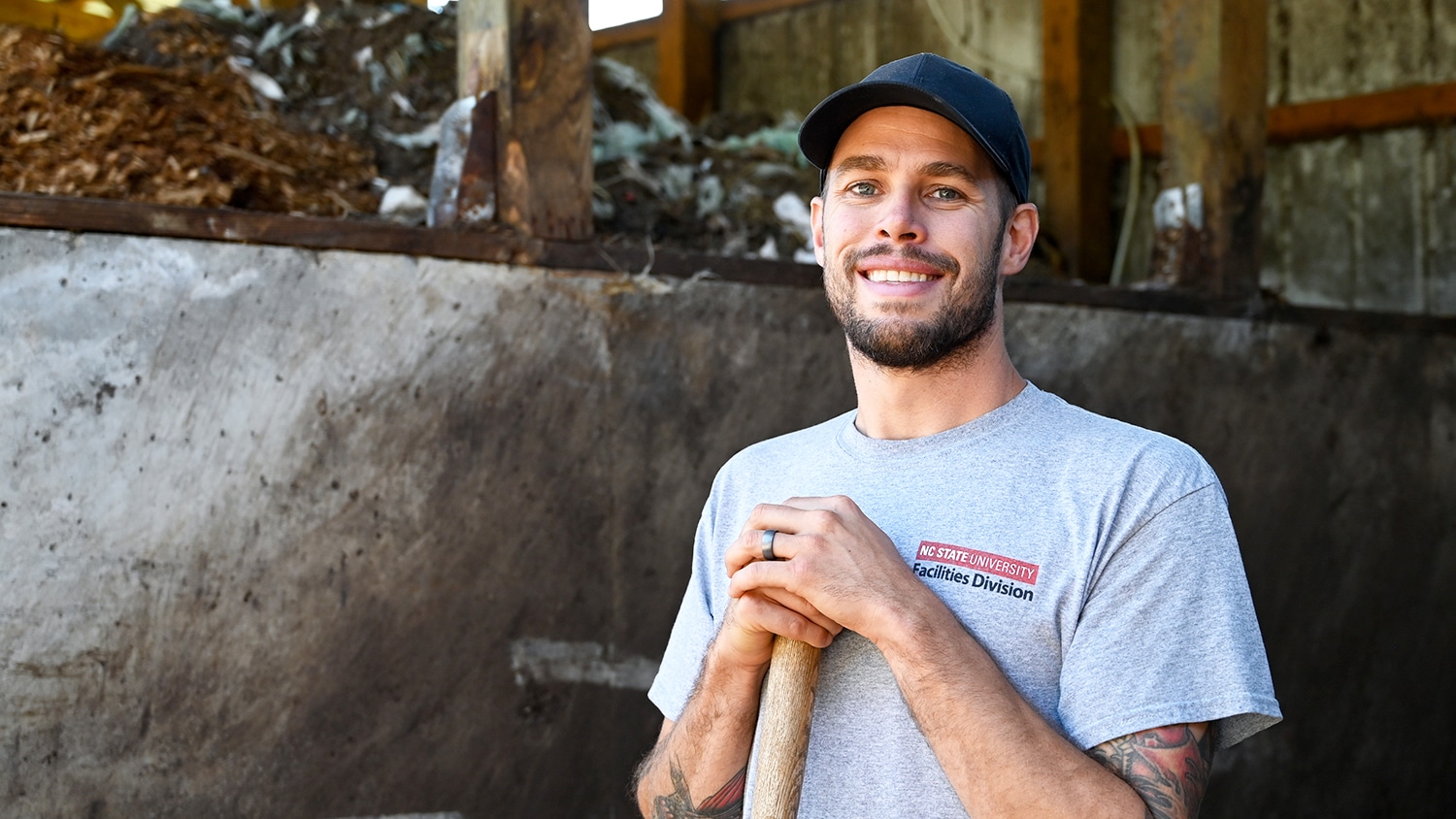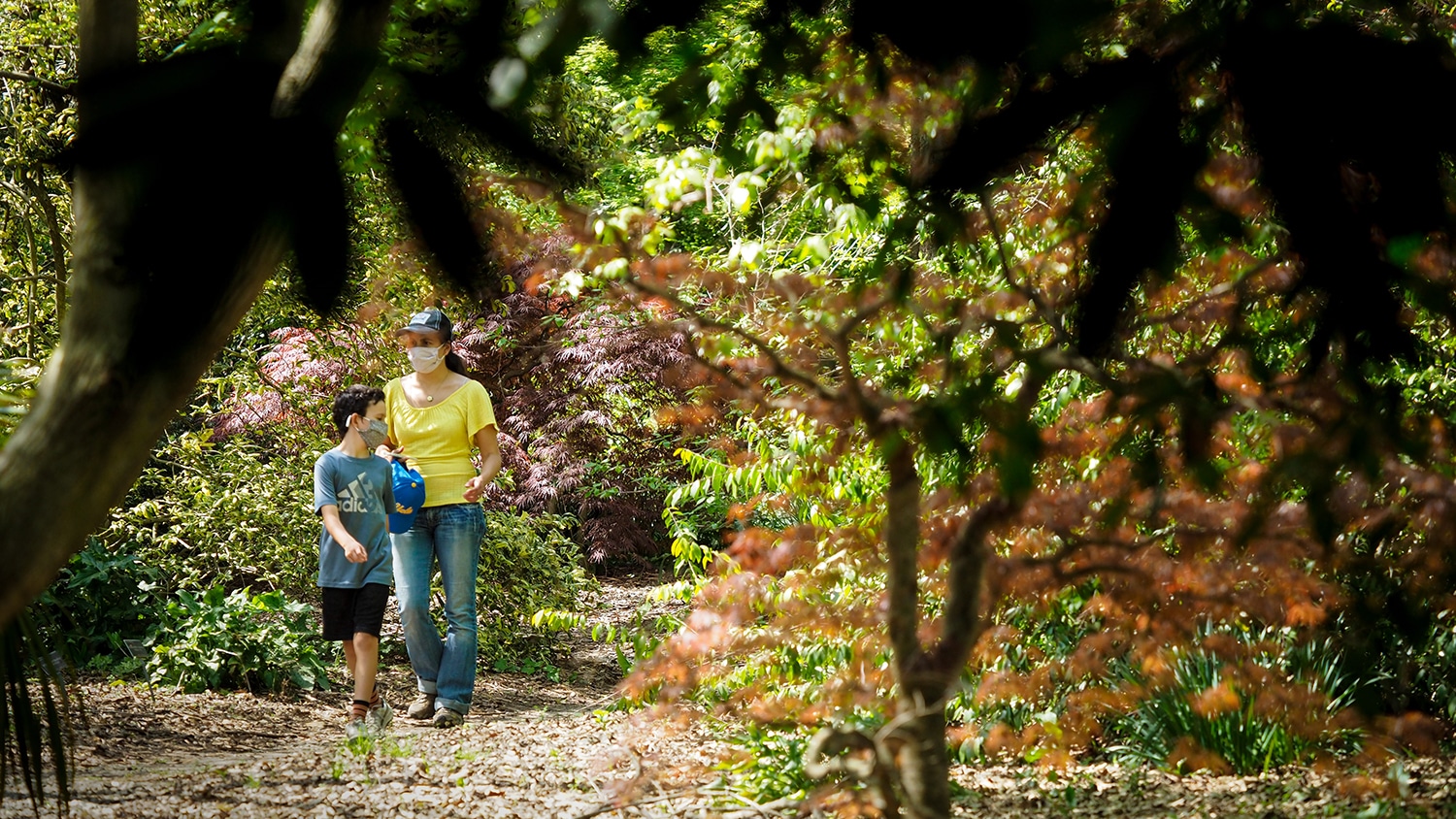Proactive Pack
Staff in Facilities and Campus Enterprises worked long and hard — well beyond the call of duty — to make campus safe for the fall semester.
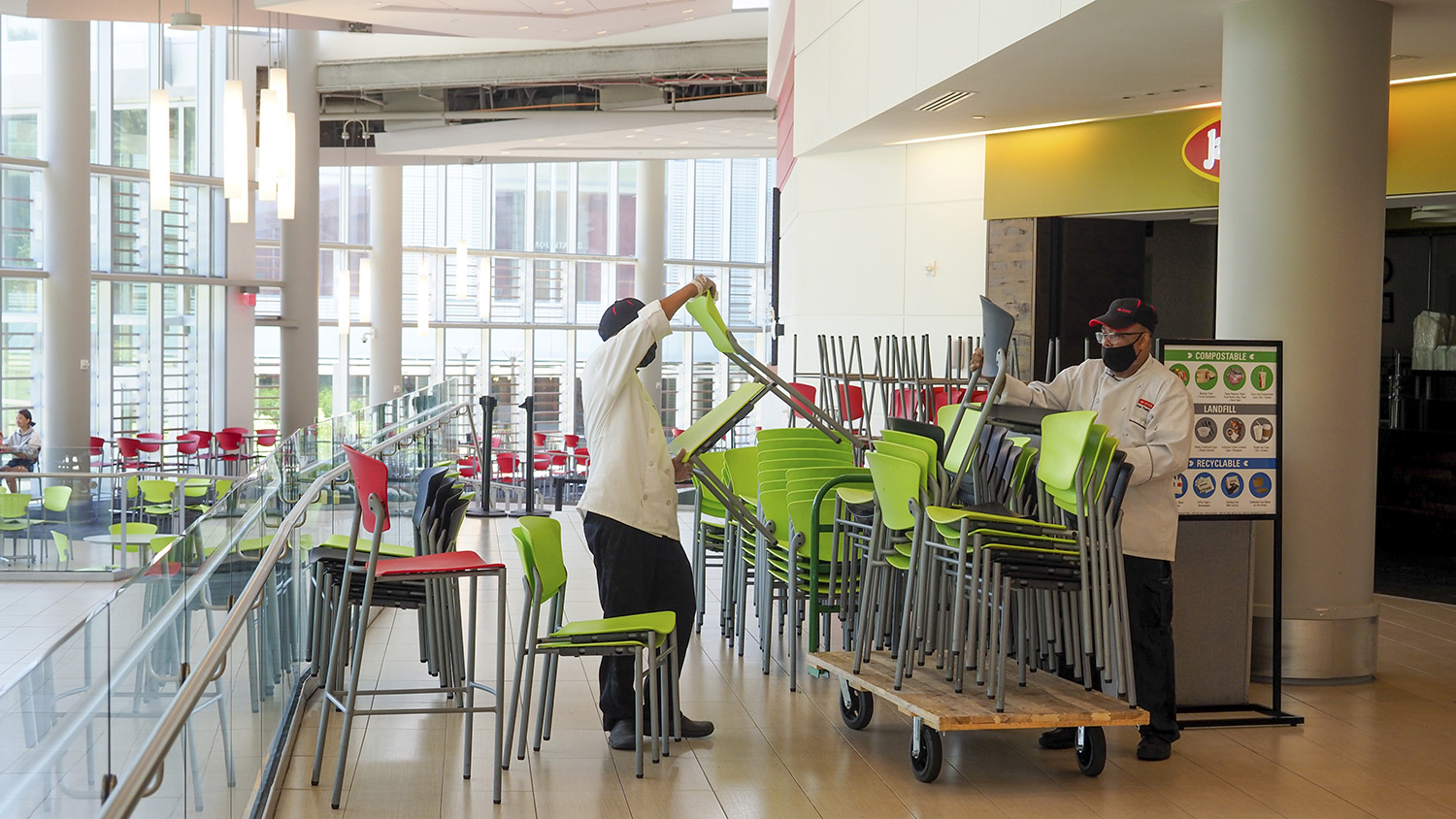
Once COVID-19 started spreading in North Carolina, staff in the Facilities Division and Campus Enterprises stepped up to the challenge of making campus a safe environment for students, faculty and other staff members. For months they took on new projects, absorbed ever-changing information and collaborated with different teams to meet their goals.
“We’re proactive in anticipating needs,” said TJ Willis, associate director for building services in Student Centers. “All levels of the team, from our housekeepers to our event coordinators to our students, really did an amazing job.”
The Student Centers staff is used to observing how students use the centers and solving problems, so adapting the Talley Student Union, the McKimmon Center and other areas for the pandemic was instinctive.
“How Talley was designed to be used five years ago is not how it’s used today,” said Erica Epps, associate director for event services. “We’ve evolved and adjusted. It was really natural for us to look at that.”
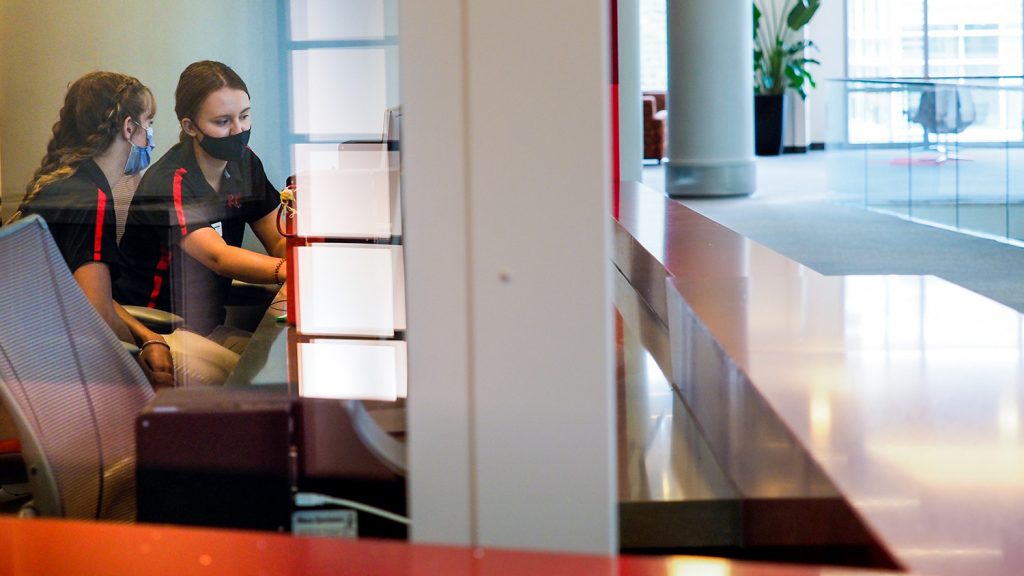
Willis wanted students to have an experience in the Student Centers that mirrored that of academic buildings. “That way they weren’t trying to switch between environments,” he said. His team focused on how people moved throughout the building, how often areas could be cleaned and what times students were most likely to congregate in certain spaces.
“It was really pulling all the pieces together and thinking, how do you get to that area safely?” Willis said.
“We know students aren’t transported straight from their dorms into the classrooms,” Epps added. “They stop at bathrooms, talk with friends.”
Willis and Epps worked with Registration and Records and the Office of the University Architect to determine which spaces could be safely used for classes. Then, they worked with the Office of Information Technology to ensure those spaces were ready for classes.
“We went from our standard set up — a lectern and a microphone — to a full-fledged classroom set up in at least five spaces,” Epps said.
In the Facilities Division, David Currin’s team switched from repairing problems on campus to building 8-foot picnic tables for outdoor classes. Currin leads the General Shop, and he said there was some hesitation initially at the thought of creating dozens of tables.
“We normally take repairs all over campus,” Currin said. “Woodworking’s not generally something we do on a regular basis. Once the team realized it was achievable, they were willing to do whatever was needed to get students back on campus. Everybody was working in one direction to meet the same common goal.”
The crew ended up making 132 picnic tables. Currin said his teeam members were always thinking ahead: They even designed tables compliant with the Americans with Disabilities Act, allowing wheelchair users to access space easily. All of the tables had sealant so they could be easily cleaned. When students left campus, the tables were scattered across campus so they were more accessible to faculty and staff. Some students still use them, and the tables are sturdy enough to be used for years.
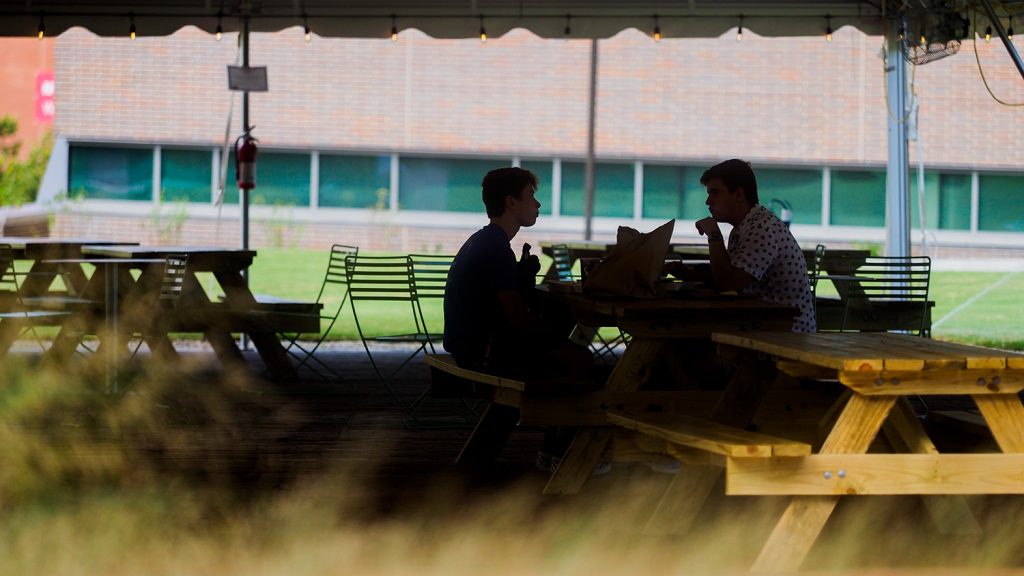
“They’re not going to fall apart any time soon,” Currin said. “Next year, the tables are still going to be in really good shape. It’ll be 15 to 20 years before you see them aging to the point that they can’t be used.”
An all-hands-on-deck approach was a necessity in preparing campus for the fall semester.
Everybody was working in one direction to meet the same common goal.
“All of the trade shops at some point had their hands full getting everything together,” Currin said. “If you saw someone exhausted running the saw one day, you would take the saw the next day. They swapped out chores to make sure no one person got exhausted.”
The Office of the University Architect had a similar approach. New information was constantly coming out, and the office had to revisit the drawing board several times when determining which classrooms were safe for a number of students. Collaboration was key within the office and with departments like Records and Registration, which was working on class schedule optimization.
“There were a lot of late nights because there was a big crunch,” facility planner Liz Moore said. “You’re trying to make sure things are as safe as they can be with the limited information we have.”
The Office of the University Architect’s staff first thought that classrooms could be filled at a certain percentage of their capacity or that each student could have a certain amount of personal square footage space. But the situation was more complex. The planners needed to look at whether a room had fixed seating, what kind of space aisles took up, how much space the instructor needed, how tables and benches were configured. Interactive spaces like science labs had different needs than presentation-style rooms like lecture halls had.
You’re trying to make sure things are as safe as they can be with the limited information we have.
“It really was a concerted effort to try to make sure the rooms could support environmental learning, that they’re a safe space for people to learn,” Moore said.
The team examined almost 300 classrooms as well as Student Centers, looking at room layouts and seating arrangements. When it was time to start moving furniture, Moore faced a particular challenge: She had sprained her ankle and popped her knee earlier. It was difficult for her to bend and place signage saying where tables should be and where students should sit. So her 16-year-old daughter helped out.
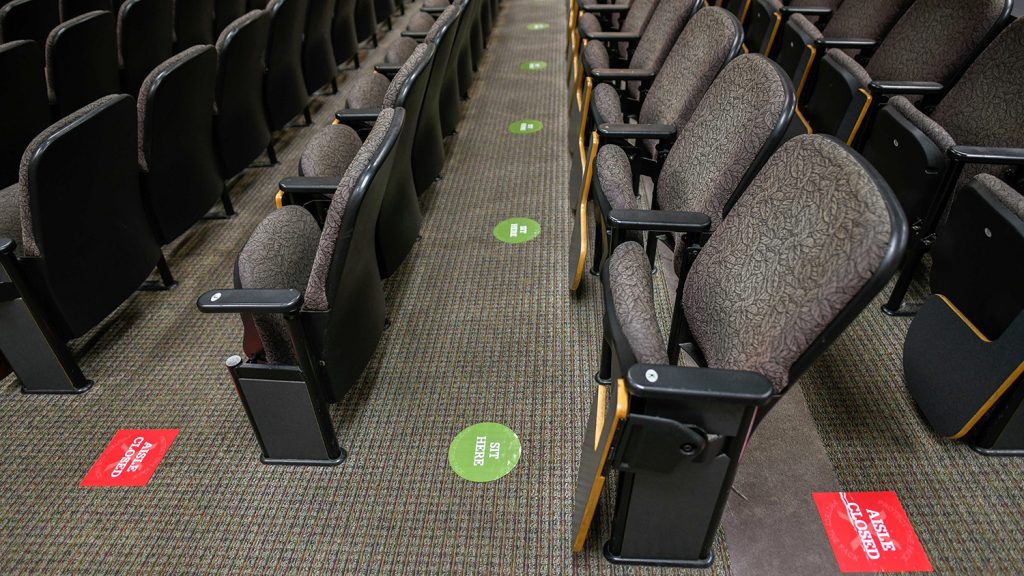
Other staff members worked on the academic buildings themselves, deciding which doors should be entry-only and exit-only, which staircases should allow people to go up and which should allow people to go down, where hand-sanitizing stations should go.
“There were a lot of people across campus that worked really hard to try to make it be successful this fall,” Moore said. And the fact that undergraduate classes were held for only two weeks this fall doesn’t diminish the work that staff put in over several months.
“You have to be prepared that we have to be flexible,” Moore said. “Throughout the whole process, you have to be flexible. You have to try something, and if it doesn’t work the way you want it, you have to adjust.”
- Categories:

